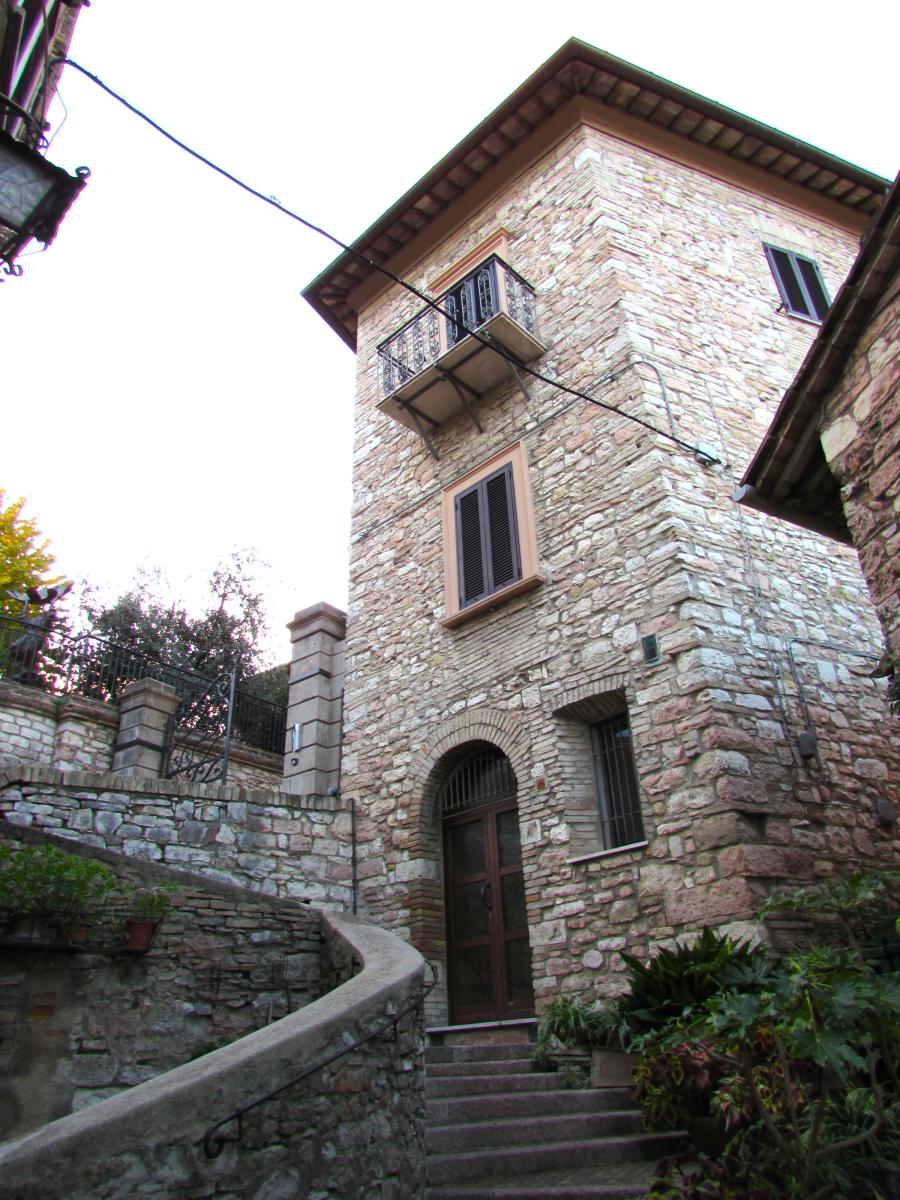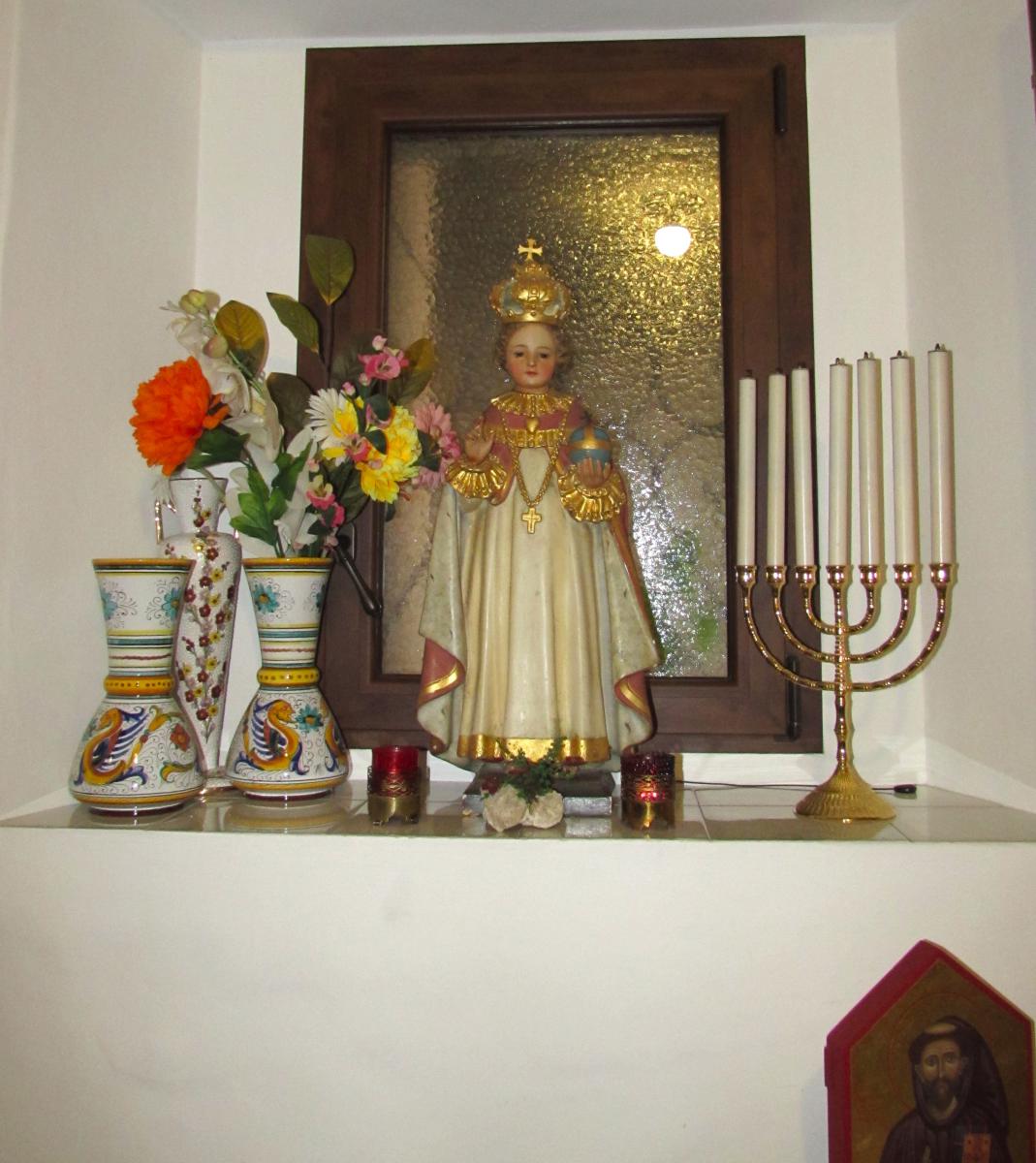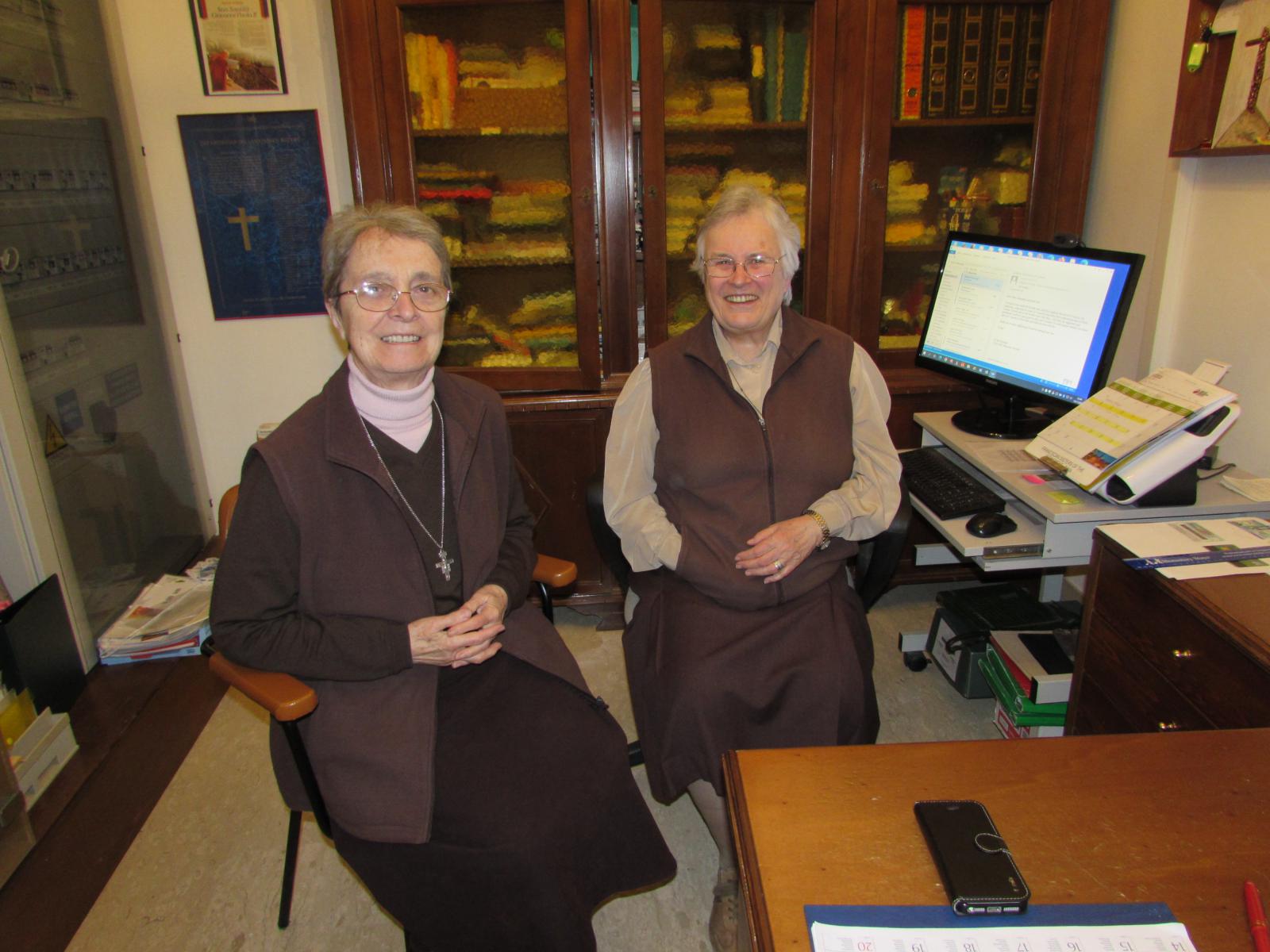
Children of God in Assisi
Kevin Elphick, OFS
The Vatican recently announced that Józef and Wiktoria Ulma, as well as their children will soon be beatified. The sanctity of this Polish family is being recognized for their role in hiding and protecting Jewish families from the Nazis.[1] The Polish family was ultimately killed in March of 1944 by a Nazi patrol because of their efforts to help protect these Jewish individuals. The sanctity inherent in the act of hiding at-risk Jewish people is as ancient as the biblical innkeeper, Rahab, the Canaanite woman who hid the Jewish men sent by Joshua. (Joshua 2:1-6) In the New Testament her actions are held up as an essential example of righteousness. (James 2:25) During the Holocaust, other righteous individuals, heedless of the risk to themselves, helped hide Jewish individuals and entire families. One example is the Dutch family of Corrie ten Boom. The story of her family’s efforts to protect Jews from the Nazis was told in her 1971 book, The Hiding Place, and in the 1975 movie by the same name.
Ten years later, the film The Assisi Underground would depict the efforts of the Italian town of Assisi in its efforts to safeguard Jews. Assisi’s Bishop Giuseppe Placido Nicolini, O.S.B., had participated in coordination of efforts to help other refugees from the war.[2] By September 8th of 1943, the efforts were expanded to include also Jewish refugees. Bishop Nicolini himself reached out to Franciscan convents and monasteries in Assisi, asking that they house these Jewish families. When he encountered resistance, he explained that this “…was the desire of the Holy Father… “ and that the Jewish families “needed help and they were children of God.”[3] Both Poor Clare and Third Order Women’s communities in Assisi responded to his call.
Among the Third Order communities responding were the Franciscan Sisters of the Atonement, a community which originated in the United States. In Assisi, they are fondly referred to as the Sorelle americane, the “American Sisters.” Their role in providing sanctuary to Jewish families has not previously been widely known. The inherent risk the Sisters took on in providing safe shelter for these families is best illustrated by a late night encounter which took place shortly after the families were taken in. Sister Aloysius Flanigan, the superior of their house in Assisi, kept a daily journal of the events there.
She recorded the incident, conveying the immediacy and emotional impact of the event by writing of it fully in the present tense.
"Tonight at one o’clock, the Sisters are awakened by cries for help. There are some shots fired and loud knocking is heard. The Sisters can see the light from the machine gun which is used on one of the doors to force it open so the Fascists and Germans can get the people they are after. To our surprise, our front door bell is rung very wildly and steps have been heard coming up the courtyard. Then we realize that it is our door they are trying to force open also. The Sisters hurriedly get dressed and go to the front of the house. To our surprise the lock has been forced open and the door is standing ajar with the latch from the other door across it so it couldn’t open any wider, but the soldiers have gone. Thanks be to God and St. Michael we are safe."[4]
It is not clear if Sister Aloysius knew that the archangel Michael is specifically remembered as the defender of the Jewish people, but her attribution of his and God’s protection during the assault on their convent house is telling.[5] Rumors circulated around Assisi the next day that two of the Sisters had been seized by the armed forces, but this rumor proved untrue. Giorgio Cerniani was one of the Jewish individuals being sheltered by the Sisters; he was a child at the time. He revisited the Sisters’ house in September of 2002 and upon entering, made his way straight to their chapel and pointed out the Infant of Prague statue there. He recalled the fevered prayers of Sister Aloysius and her community there that night and connected the safe outcome of that night with the prayers before that statue. The Jewish Infant had helped to protect him and his fellow kinfolk.[6]
The Society of the Atonement originated as a Franciscan Anglican community founded in 1898 by Fr. Paul Wattson, SA, Servant of God, and Mother Lurana White, SA. It was eventually welcomed into full communion with the Church of Rome in 1909 by St. Pius X. Because of its origins in the Anglican Church, the Society of the Atonement has had a specific charism oriented toward Christian unity and interfaith dialogue. Their understanding of the theme of Atonement breaks apart the single word into three parts: At-One-Ment, uniting into one. It is derived from Paul’s Letter to the Romans: “we also rejoice in God through our Lord Jesus Christ, through whom we have now received the atonement” (Romans 5:11). Further, Fr. Paul Wattson enculturated the Gospel verse, “That all may be one as you, Father, are in me and I in you; I pray that they may be one in us…” (John 17:21) into the foundations of the Society. Starting in 1948, the Society collaborated with the ecumenical magazine “Unitas”, founded by the Jesuit P. Carlo Boyer and based in the convent of St. Brigida in Rome. This effort eventually evolved into the Centro Pro Unione in Rome with its promulgation annually of the Week of prayer for Christian unity.[7]
Mother Lurana and Father Paul instinctively fostered a charism already present in the Franciscan tradition. This impulse toward ecumenical and interfaith encounter has its origins in St. Francis himself who traveled to Egypt in 1219 to meet with the Sultan during the Crusades.[8] In 1245, two Franciscan Brothers, John of Plano and Lawrence of Portugal traveled to Asia “to examine everything and to look at everything carefully,” explaining that in encountering these people and civilizations which were so novel to them, that “we traveled about both through the midst of them and in company with them and we were among them…”[9] Eight years later, Brother William of Rubruck followed in their footsteps, and in the Mongol court, participated in an historic interfaith meeting in which the participants would “meet together and hold a conference…”[10] From William’s chronicle of this event “We have a most vivid account of the great disputation held between the representatives of the three religions, Christians, Moslems and Buddhists.”[11] William explained his attitudinal stance for the encounter: “we are willing to humble ourselves to all men for God.”[12] In this regard, William emulated Francis’ direction to his friars “to be subject to every human creature for God’s sake” (Earlier Rule 16)
The same inspiration compelled the lay Franciscan, Ramón Llull to learn Arabic, write an Islamic-inspired mystical treatise, and found a school to train missionaries in Arabic in 1276.[13] Famous for her preaching in Spain that attracted laity, king, and cardinal to listen, Mother Juana de la Cruz (1481-1534) also notably dialogued with Moslems in their own Arabic tongue “and they also answered in the same language.”[14] Entering into genuine dialogue acknowledges the common, inherent dignity in each person and their respective cultures. “Attentive dialogue implies recognizing … the human person's dignity and transcendent destiny.”[15] This recognition was implicit in Bishop Nicolini’s statement that the needful Jewish refugees “were children of God.” It was even more evident in the actions of the Sisters in protecting and giving shelter to them. In 1943 the Atonement Sisters in Assisi staunchly lived out their at-one-ment charism, following faithfully in the footsteps of their Society’s founders and Francis himself.
In the pages that follow in the journal of Sister Aloysius, she describes the efforts of their convent to also house children from Rome whose parents had sent them there to the better security of Assisi as a sanctuary town. Amidst war and domestic strife, the charity of the Sisters knew no bounds. Mother Lurana and Father Paul would have been beamingly proud of the Sisters in this small house in Assisi. The witness of these Sisters is especially pertinent to us in our own day when we have seen the resurgence of antisemitism and distressing acts of violence against the Jewish community. “The Righteous Among the Nations teach us that every person can make a difference.”[16]
Kevin Elphick holds a D.Min. (1996) from Graduate Theological Foundation with a concentration in Ecumenism. Earlier he obtained an MA in Franciscan Studies from St. Bonaventure University and an MA in Religious Studies from Loyola University in conjunction with a joint studies program at Spertus College of Judaica. He is a Companion of New Skete, and works as a supervisor with a suicide prevention hotline serving veterans and active duty members.
The Atonement Sisters continue their ministries in Assisi with their residence opened as a guesthouse for pilgrims. For more information, visit https://graymoor.org/italy
[1] Paolo Ondarza, “Church to beatify Polish family killed for helping Jews in WW2”, Vatican News, https://www.vaticannews.va/en/pope/news/2022-12/polish-family-killed-for-helping-jews-set-to-be-beatified.html
[2] See Josef Raischl and André Cirino, Three Heroes of Assisi in World War II: Bishop Giuseppe Nicolini, Colonel Valentin Müller, Don Aldo Brunacci (Assisi: Editrice Minerva, 2005).
[3] This comment and other details were derived directly from curated displays at the Museo della Memoria in Assisi, Italy, a museum devoted to preserving testimony to Assisi’s role during the Holocaust.
[4] The journal entry is dated Monday, September 27, 1943. Many thanks to the archivist, Sister Mary Harper, Society of the Atonement, for making this journal available for this article.
[5] Joseph Jacobs, M. Seligsohn, Mary W. Montgomery, “Michael”, JewishEncyclopedia, https://www.jewishencyclopedia.com/articles/10779-michael. Sister Aloysius may also have been conscious that the Feast of St. Michael was to be celebrated two days later.
[6] The Museo della Memoria recalls and depicts this event in its displays. This writer also heard the story recounted directly from the Atonement Sisters he met with, Sister Alessandra and Sister Susanne.
[7] Franciscan Friars of the Atonement, “A History of the Week of Prayer for Christian Unity”, https://www.atonementfriars.org/a-history-of-the-week-of-prayer-for-christian-unity/
[8] See Paul Moses, The Saint and the Sultan: The Crusades, Islam, and Francis of Assisi’s Mission of Peace (New York: Doubleday, 2009).
[9] Christopher Dawson, Mission to Asia (Toronto: University of Toronto Press, 1980), 4.
[10] Dawson, Mission to Asia, 189.
[11] Dawson, Mission to Asia, xxiii.
[12] Dawson, Mission to Asia, 153.
[13] See Henry L. Carrigan, Romancing God: Contemplating the Beloved (Brewster: Paraclete Press, 1999), vii- xii.
[14] Anthonie of Aca, The History, Life, and Miracles, Ecstasies and Revelations of the Blessed Virgin Joane of the Cross, trans. Francis Bell (Omers, 1625), 150.
[15] “Dialogue and Proclamation: Reflection And Orientations On Interreligious Dialogue and the Proclamation of the Gospel of Jesus Christ”, https://www.vatican.va/roman_curia/pontifical_councils/interelg/documents/rc_pc_interelg_doc_19051991_dialogue-and-proclamatio_en.html
[16] “About the Righteous”, https://www.yadvashem.org/righteous/about-the-righteous.html

(1).JPG)

